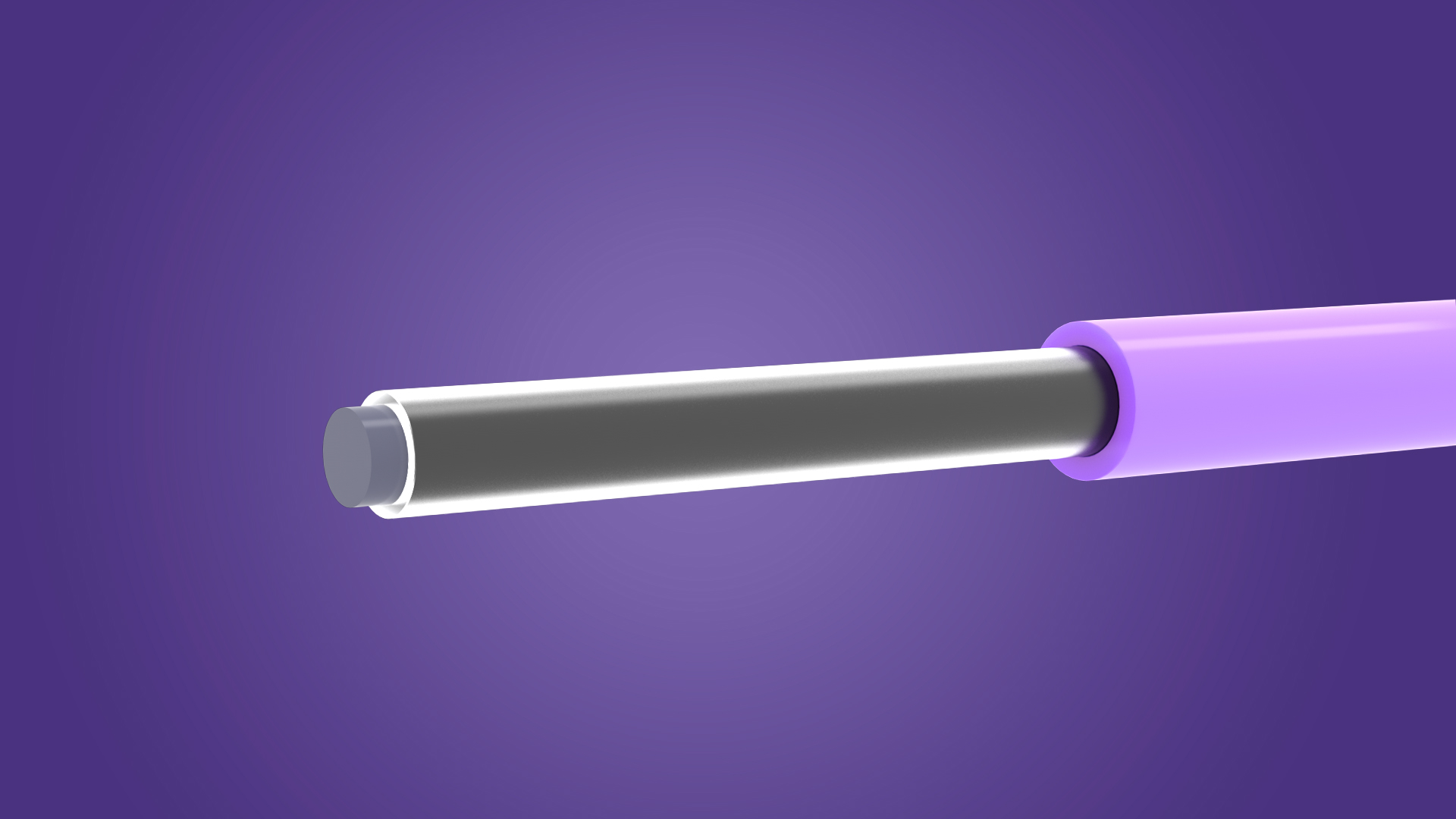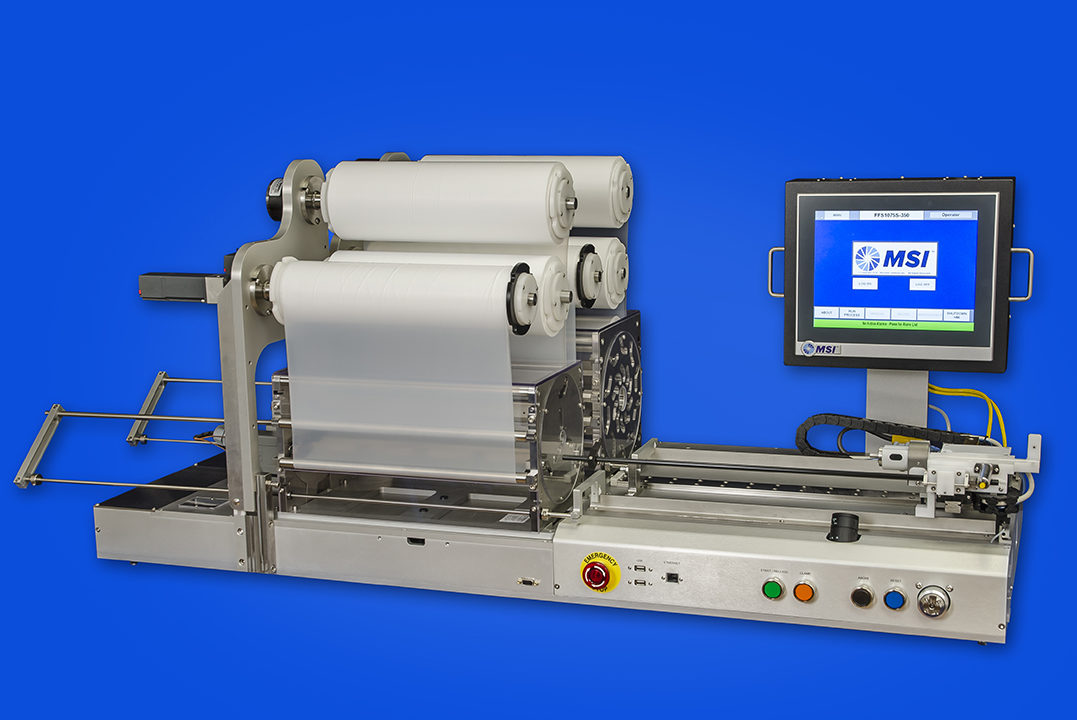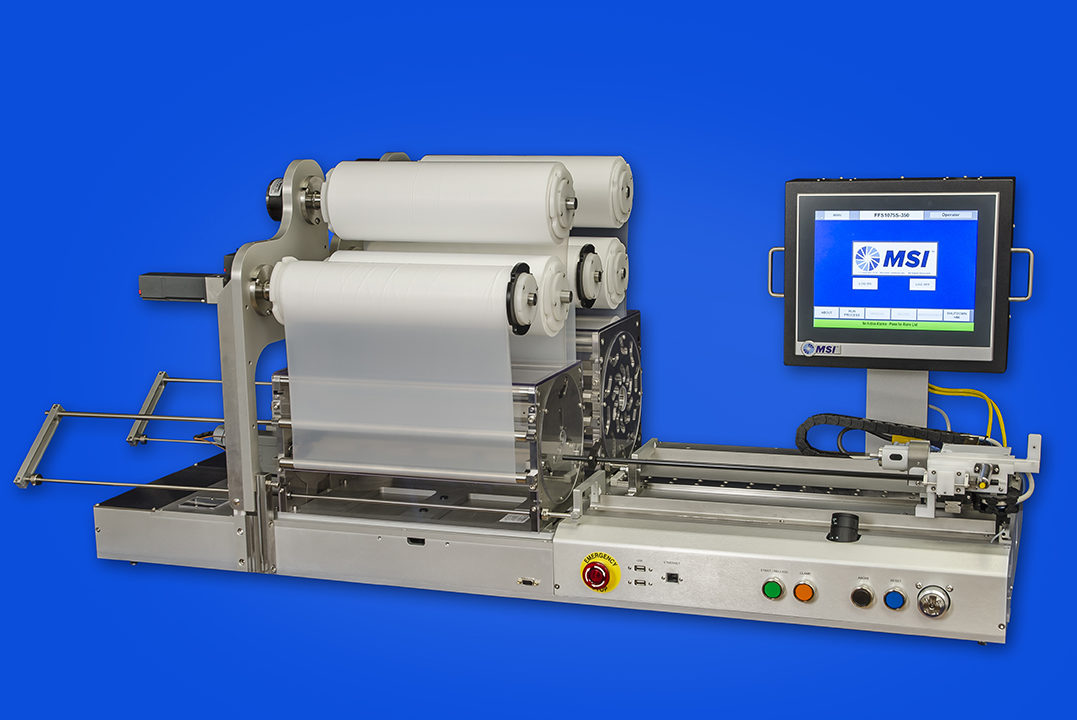Braided catheters are used in a variety of medical applications, including small diameter cardiovascular and neurovascular interventions or larger diameter structural heart and endoscopic procedures.
Braided reinforced tubing can improve functional properties such as strength, stiffness, burst pressure resistance, torque transfer and kink resistance. Design considerations, such as weave pattern, pick count (ppi), material, wire size, wire size/shape, and plastic stiffness, can have a significant impact on catheter performance.
Weaving/winding
SteegerUSA is a leading supplier of braiding and winding equipment for medical device manufacturing. SteegerUSA IMC motion control machines enable operators to automatically configure pick quantities, segment lengths and speeds. This enables our customers to produce products with design flexibility, stiffness, kink resistance, improved torque response and radial/hoop strength.
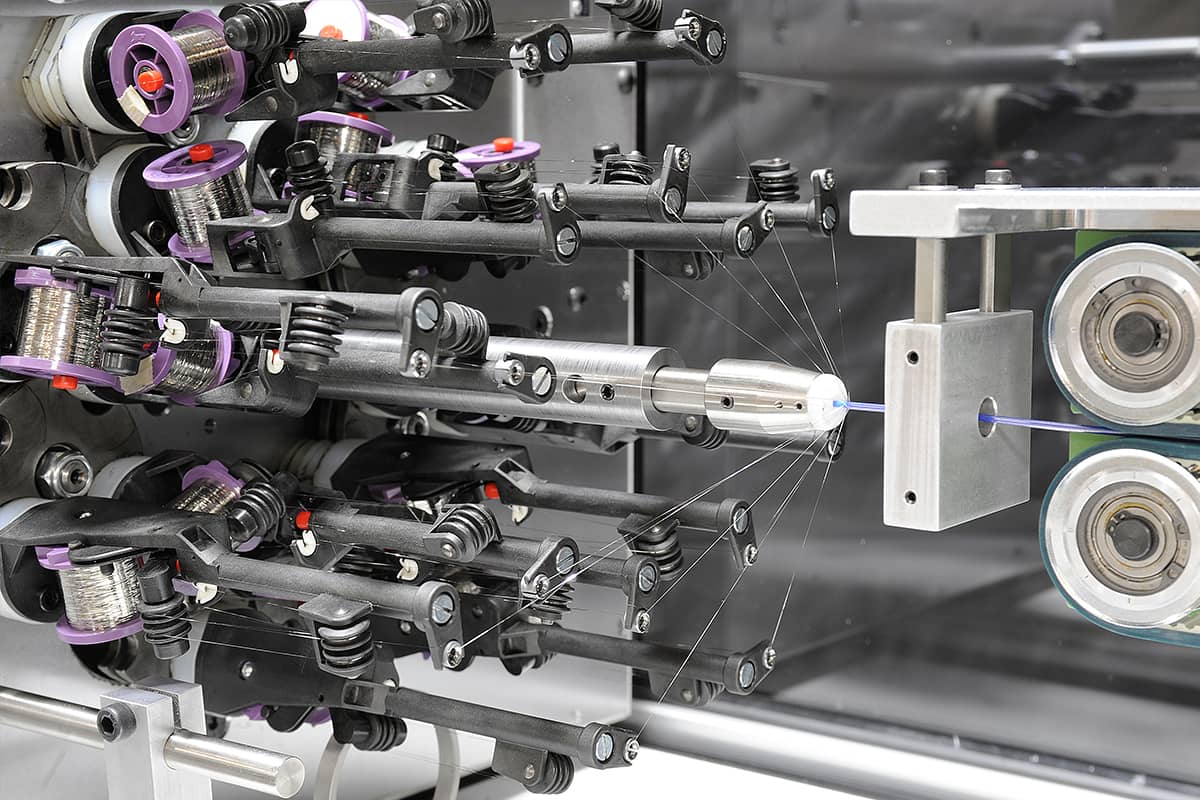
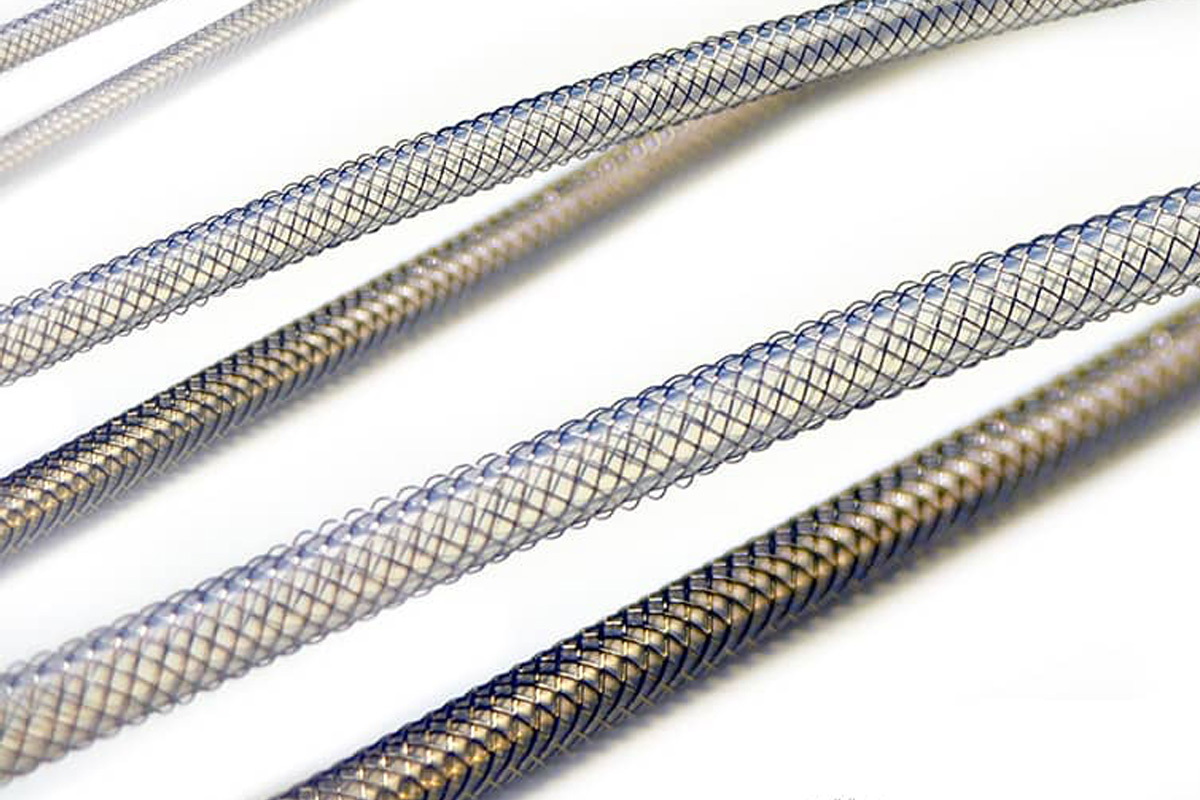
Typical catheter braid pattern
SteegerUSA knitting machines are capable of creating a variety of knitting patterns. Each pattern provides specific mechanical properties for the finished device.
The fully loaded braid pattern (one single wire under two wires then over two wires) provides flexibility, pushability and maximum torque transfer.
Diamond weave pattern (two wires alternately crossed side by side, then over two wires) provides maximum torque capability and kink resistance
The One Over One braid pattern, also known as half load, is the primary braided catheter pattern used in medical device manufacturing. This pattern is easiest to remove from the core without increasing the thickness of the braid.
SteegerUSA Knitting R&D Lab
SteegerUSA's R&D laboratory provides state-of-the-art weaving, winding, stranding and laminating equipment for short-term contract manufacturing or feasibility studies. Our state-of-the-art laboratories allow you to develop and test processes for your full-scale manufacturing.
Steeger has the following capabilities in our R&D laboratory:
Create a sample
run the test
Research and Development
long-term consultation
Short-term production increase
Contract source identification
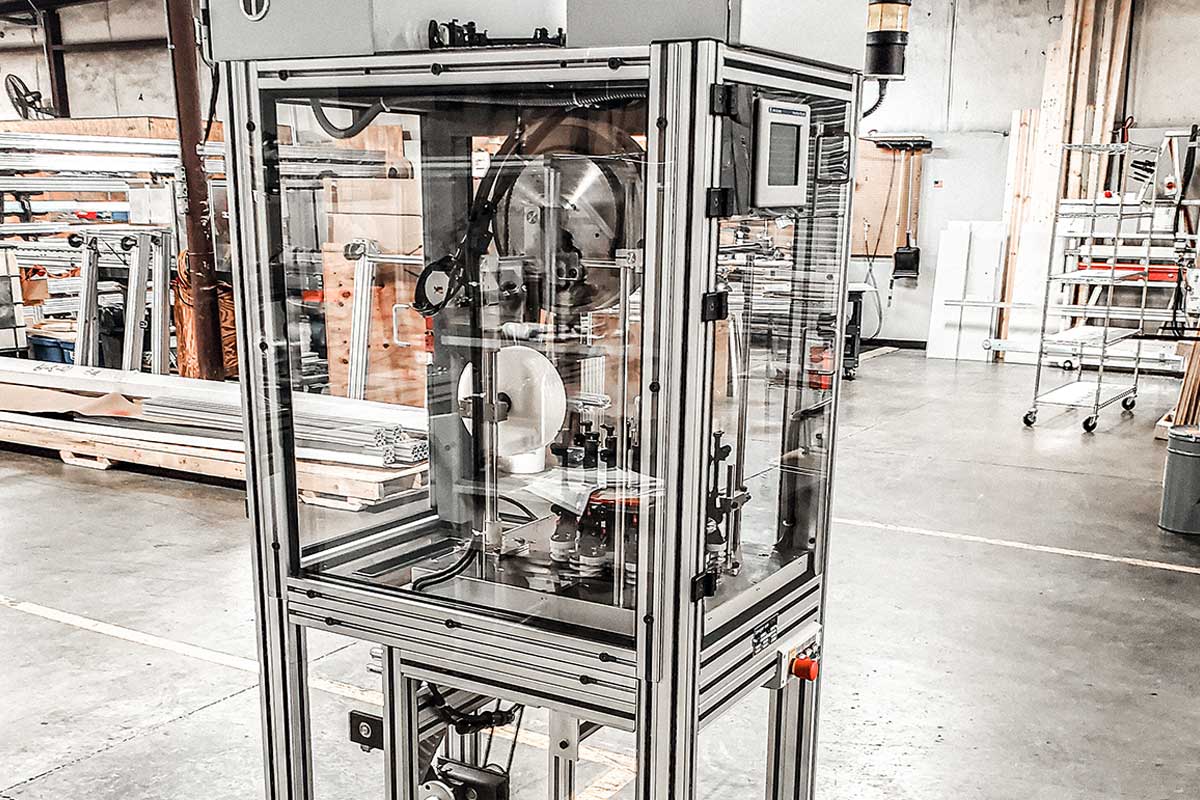
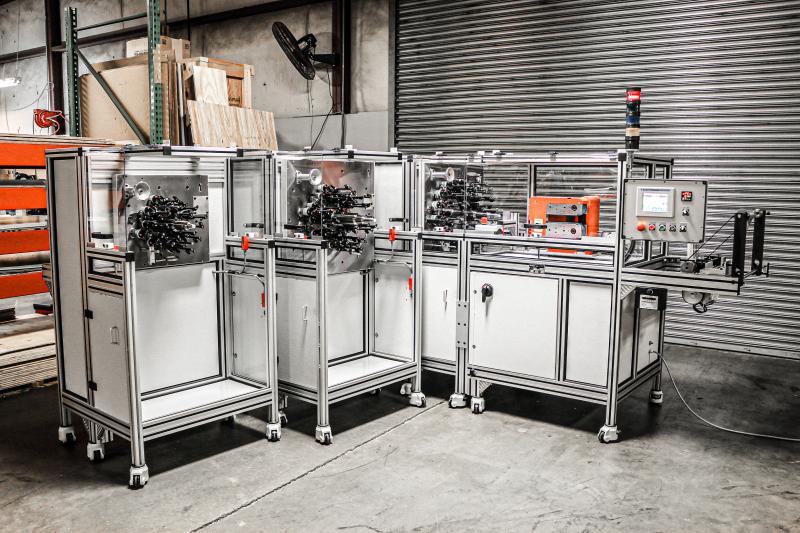
Expand your knitting capabilities
Customers want to increase product OD, run half-load weave patterns for additional tracking capabilities or other functional changes to differentiate them from competitors, and use potentially underutilized machines for flexible manufacturing capabilities. In order to support our customers in developing this unique number of carriers, Steeger USA would like to inform our customers that the frames (tractors, drive systems, etc.) of horizontal 24 or 32 carrier machines can also accept 8, 12 or 16 carriers Head, its maintenance team has minimal modifications and takes less than an hour to convert.
Medical braiding machine with reduced noise output
SteegerUSA has been upgraded for various design parameters that can affect catheter performance. Braid pattern, braid density, and wire thickness are among several factors that affect catheter performance.
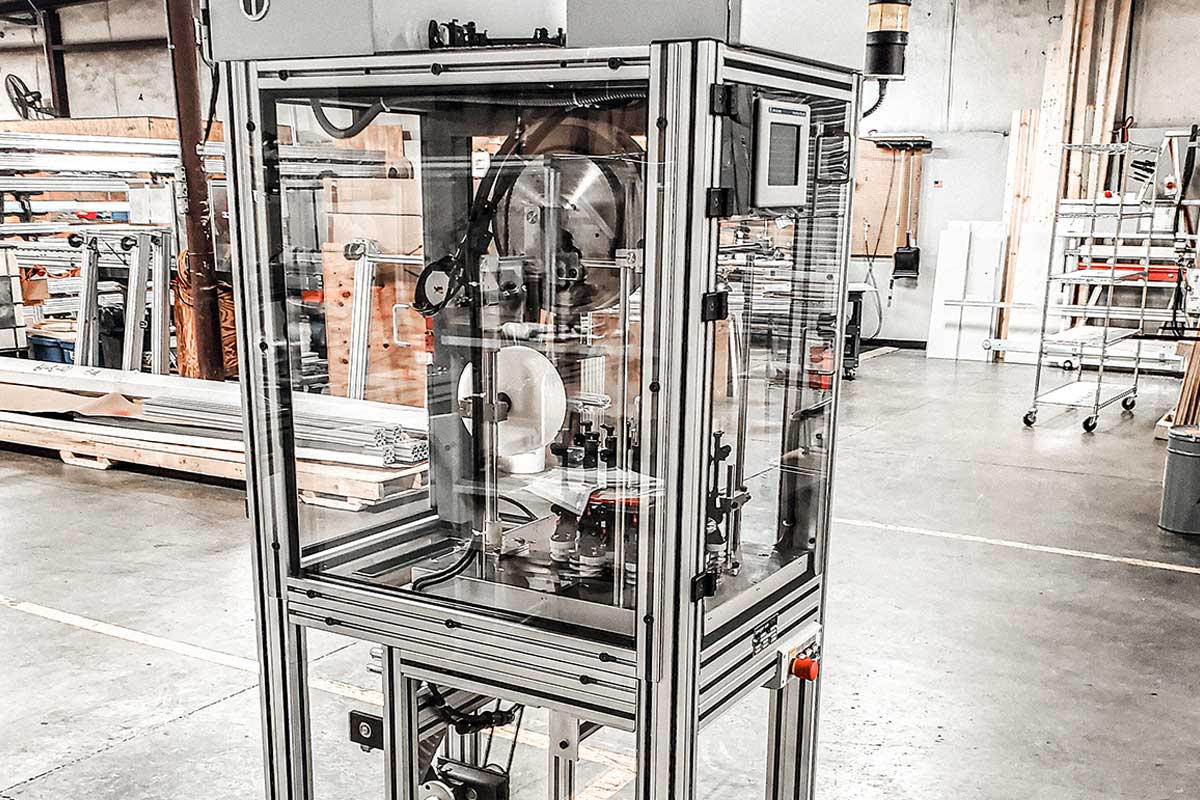
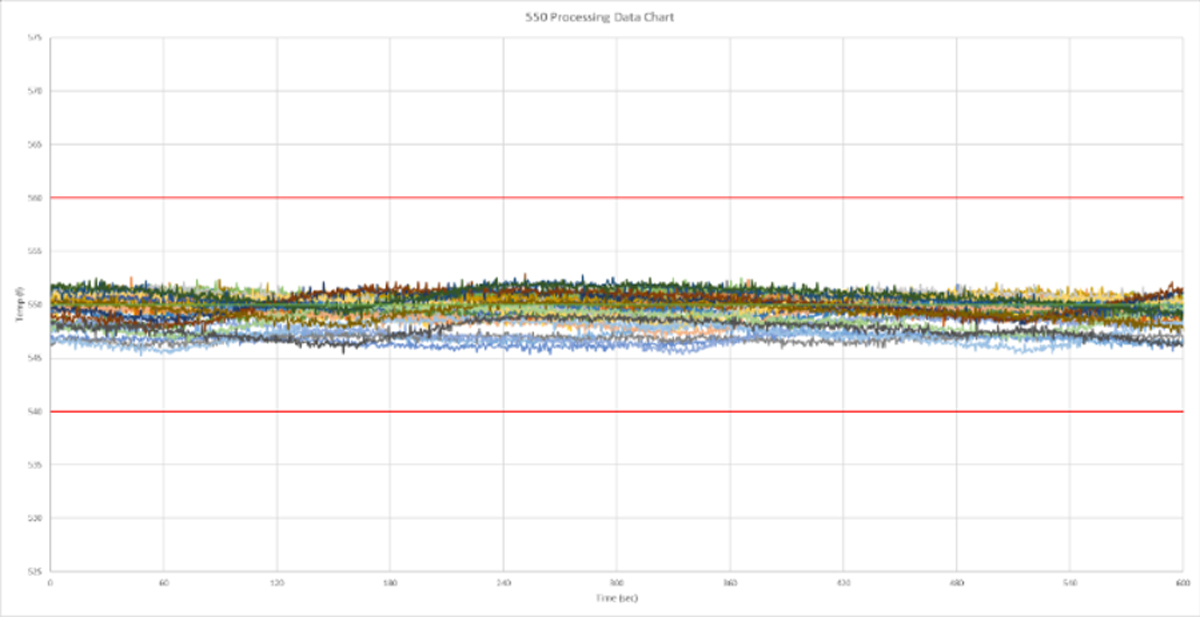
Vertical Lamination Temperature Stability and Repeatability Test Data
Machine Solutions has performed performance testing on our conduit lamination systems (VL series platforms) to validate device designs for optimum consistency, stability and repeatable output. After the recommended 10-minute warm-up period, test results confirmed a lane-to-lane, run-to-run, and machine-to-machine consistency of ±3°F.
Medical catheter winding machine
Steeger USA coilers are ideal for reel-to-reel coiling applications. Steeger offers a retrofit package that allows our customers to easily use their 16-carrier horizontal or vertical braiding machine as a coiler. This provides customers with a coiler for R&D projects without having to invest in a production coiler.
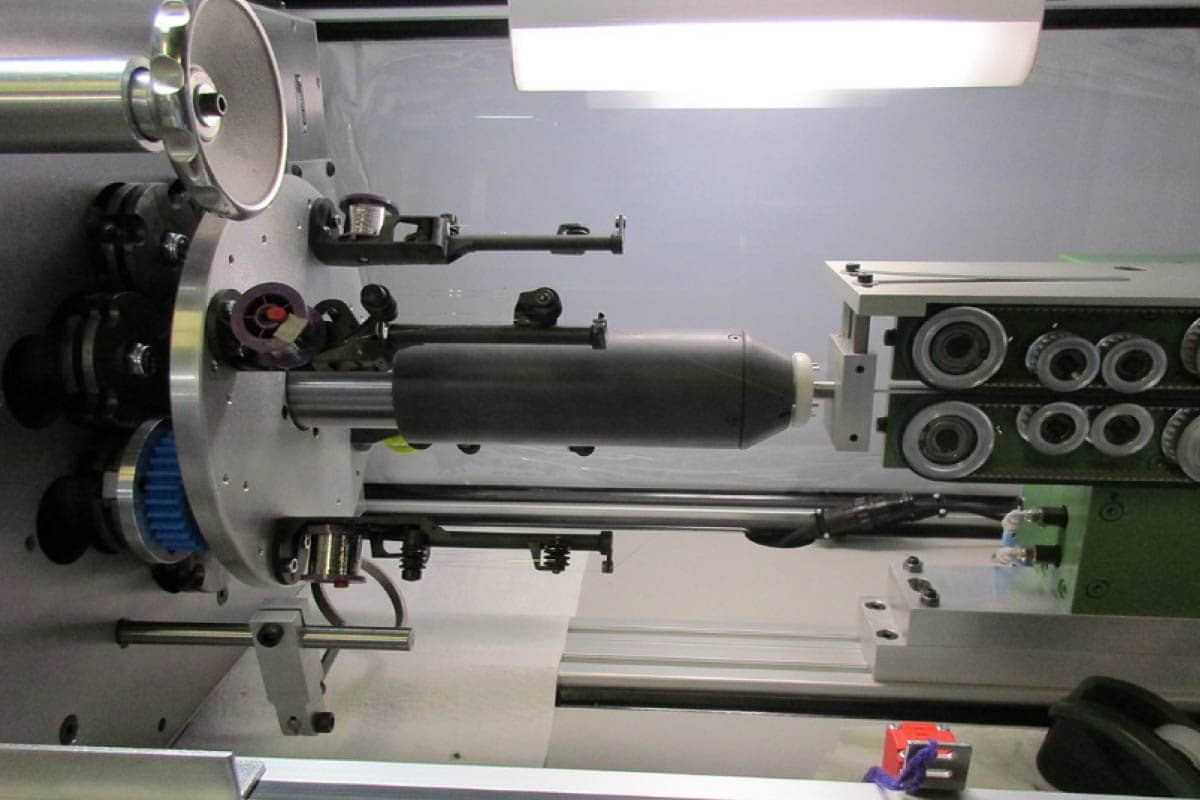
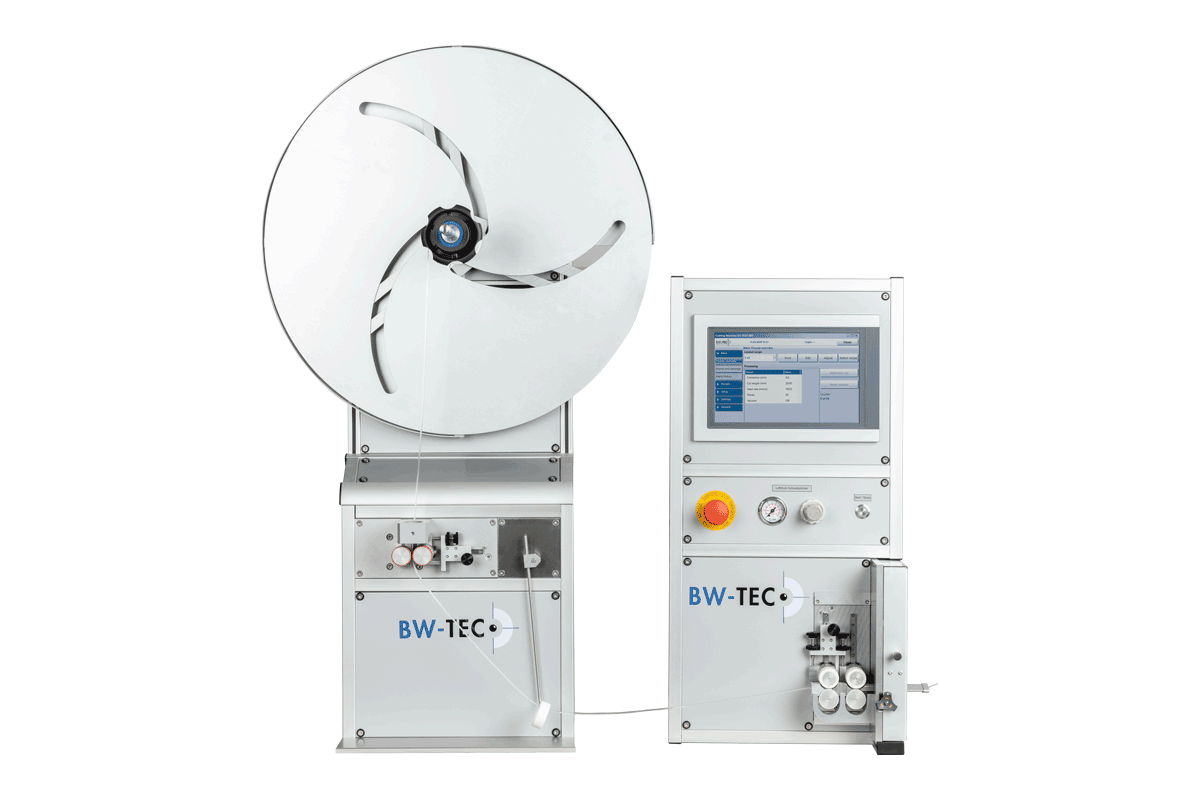
Automatic pipe cutting machine
For the assembly of multiple durometer tubes, it is beneficial to use an automatic tube cutter to create tube sections of discrete lengths and clean edges. These tube segments will be assembled on braided tubing, covered with heat shrink tubing and using a hot air hot box.
Post fit support tool
Once the lamination process is complete, the operator will strip the heat shrink and remove the core material from the braided assembly. Machine Solutions offers a variety of process tools to automate these traditional manual processes.
The Underworld Mandrel Removal Tool removes the tedious task of removing the mandrel by pulling the mandrel at a controlled speed, extracting the mandrel from the Product Spindle ID. The mandrel can then be reused.
Our mandrel stretchers facilitate their removal by stretching extensible mandrels such as copper, teflon and acetal to reduce their diameter. This machine choice is suitable when the mandrel is to be discarded after use.
Heat shrink removal tools are commonly used to strip and remove heat shrink from mandrel and tubing assemblies. Our heat shrink removal solutions are used to minimize operator handling time and improve overall product performance.
